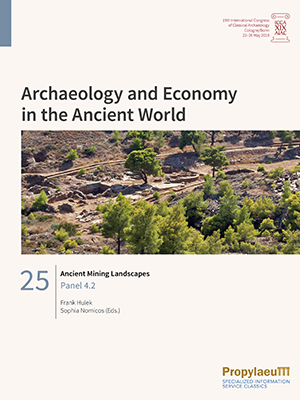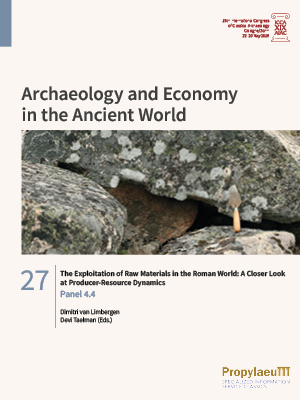Becker, Fabian
Ancient Mining Landscapes: Panel 4.2
Die wirtschaftliche Bedeutung der Rohstoffgewinnung, insbesondere des Bergbaus auf Metalle, für antike Gesellschaften wurde schon oft betont. Aber erst in den letzten Jahrzehnten sind dabei auch die archäologischen Hinterlassenschaften in den Blickpunkt der Forschung gerückt. Diese umfassen nicht nur die Bergbauüberreste im engeren Sinn, wie Bergwerke und Aufbereitungswerkstätten sowie deren Abfälle, sondern auch Siedlungsplätze und Infrastruktur im weiteren Sinne, die im Zusammenhang mit der Rohstoffgewinnung entstanden sind.
Dieses Panel beim 19. Internationalen Kongress für Klassische Archäologie sollte einen Überblick über laufende und geplante Forschungen zu Landschaften geben, die in besonderer Weise durch den antiken Bergbau geprägt sind. Es zielte außerdem darauf ab, die Auswirkungen des Bergbaus nicht nur auf die physische Umgebung, sondern auch auf die Kulturlandschaft zu diskutieren. Anhand von Fallbeispielen stand dabei die Identifikation von materiellen Eigenschaften von Bergbaulandschaften, die Unterschiede zwischen ihnen und eventuelle gemeinsame Organisationsmuster im Vordergrund.
The Exploitation of Raw Materials in the Roman World: A Closer Look at Producer-Resource Dynamics: Panel 4.4
Im Vergleich zu anderen vormodernen Volkswirtschaften zeichnet sich die römische Welt durch die Entwicklung eines hochspezialisierten und sehr produktiven Produktionssektor aus. Diese Entwicklung führte zur grossflächigen Ausbeutung von Rohstoffen. Sogar in einem Gebiet von der Grösse des römischen Reiches übten diese Aktivitäten großen Druck auf die Natur aus. Strategien der Ressourcennutzung und -erhaltung waren daher unerlässlich, um mit der mittel- oder langfristigen begrenzten Verfügbarkeit dieser Ressourcen erfolgreich umzugehen und die Nachhaltigkeit des römischen Nutzungsmodells zu sichern. Dieser Band befasst sich mit den verschiedenen Arten der Ausbeutung und Bewirtschaftung natürlicher Ressourcen in der römischen Welt. Er konzentriert sich darauf, ob, wann, wo und wie die Römer ein harmonisches Gleichgewicht zwischen der begrenzten Verfügbarkeit einer bestimmten Ressource und dem Gesetz von Angebot und Nachfrage anstrebten. Die Fallstudien in diesem Band decken verschiedene Schlüsselbereiche der weströmischen Welt ab - von Italien und der Insel Elba, über das Küstenland Kroatien bis hin zu Zentral-Ost-Gallien und dem pannonischen Limes - und diskutieren insbesondere die Fischindustrie, die Eisenverhüttung, die Abholzung und Waldbewirtschaftung, den Steinhandel und die Ausbeutung thermomineralischer Ressourcen.








